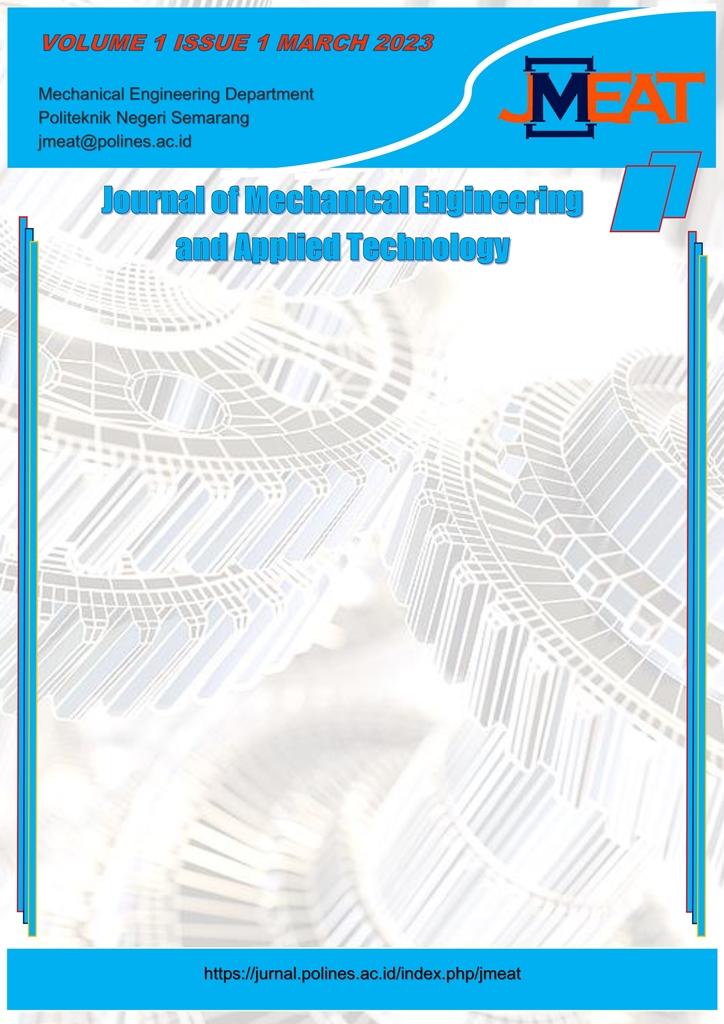Rancang Bangun Mesin Pengepres Sandal Mengunakan Roll Kapasitas 60 Buah/Menit dengan Daya Motor 1 HP
DOI:
https://doi.org/10.32497/jmeat.v1i1.4723Abstract
Abstract
Sandals are a need for clothing for humans which are often used in daily activities, sandals are also protective feet for humans when on the move. Sandals have several types, in this study the authors focused on sandals made of EVA sponge. In the process of making sandals, several machines or tools are needed to make sandals, while this research will focus on the sandal adhesive machine. The purpose of this research is to get perfect gluing results in making sandals using a roll machine which is easy to operate and maintain. The method used is gluing the sandal material through a rolling process which is carried out by placing the sandal material on the guide table, then the sandal material is entered between a pair of pulling rolls and then forwarded to the next pair of rolls for the gluing or pressing process. The end result of the design of this sandal pressing machine can produce sandals production capacity of up to 60 sandals/minute with a shear stress strength of 0.1505 N/mm ².
Downloads
Published
Issue
Section
License
Authors who publish articles in this journal agree to the following terms:
The author owns the copyright and grants first publication rights to the Journal with work simultaneously licensed under a Creative Commons Attribution License which allows others to share the work with the work acknowledged and first published in this journal
Authors may enter into separate, additional contractual agreements for the non-exclusive distribution of the journal's published version of the work (for example, posting it to an institutional repository or publishing it in a book), with an acknowledgment of the first publication in this journal.
Authors are permitted and encouraged to upload their work online (for example, in an institutional repository or on an author's website) before and during the submission process, as this can lead to productive exchanges, as well as earlier citations and a larger number of citations of the published work. (See the impact of open Access).






